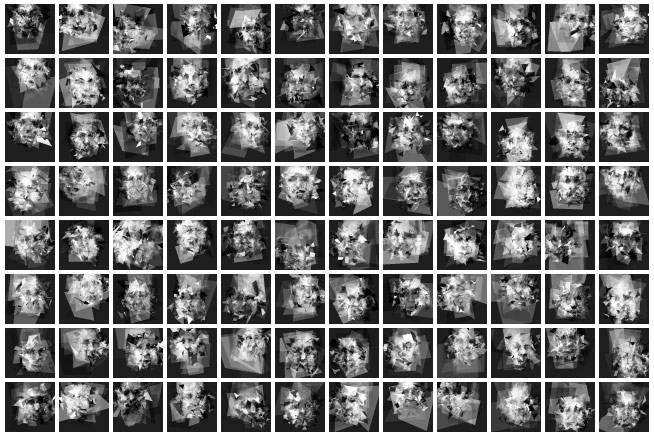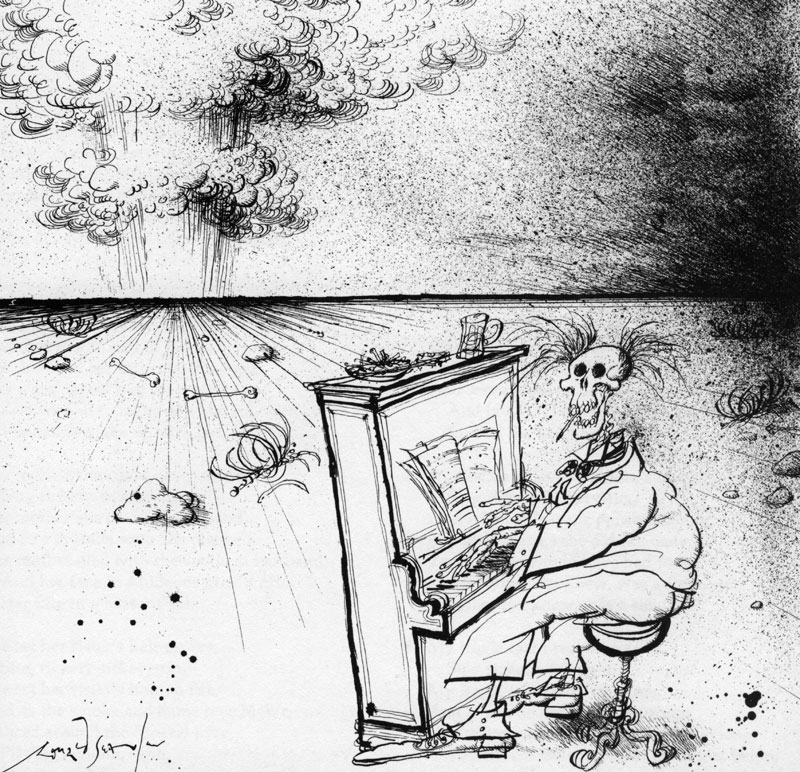Drawing is a form of listening. Wendy MacNaughton talks about her sketchbook practices on a recent episode of the Hurry Slowly podcast
Tag: drawing
-
Chibi: The Japanese Word That’s Cute And Offensive
Chibi has its roots in kobun, or classical Japanese. The kobun noun tsubi 粒つび, which means “tiny, rounded thing,” eventually evolved into the verb tsubu 禿つぶ, which describes something becoming worn down or sharp edges getting rounded out.
A good example would be a calligraphy brush losing its hairs (because that’s what they used to write back in the days of classical Japanese).
The reading of tsubu eventually changed to chibiru 禿ちびる, and suddenly we’re not too far from chibi.
I had a brief curiosity about what chibi fully means and came across what may be my new favorite post on etymology. Thorough history, examples, usage issue notes and cautions, and even a drawing guide. More word explications should come with an adorable drawing guide.
-
Pareidoloop

What happens if you write software that generates random polygons and the software then feeds the results through facial recognition software, looping thousands of times until the generated image more and more resembles a face? Phil McCarthy’s Pareidoloop. Above, my results from running it for a few hours. Spooky.
(More about his project on GitHub, and more about pareidolia in case the name doesn’t ring a bell)
[8/5 Update: Hi folks coming in from BoingBoing and MetaFilter! Just want to reiterate that I didn’t write this software, the author is Phil McCarthy @phl !]
-
Moebius on Drawing Comics
Comics give to the artist a very interesting field of exploration and research. Everything is possible. You can be very small or very big or very modest or very ambitious. You can stay in a regular style like everybody, or you can escape and be completely unusual and incredible. You can give more to the world, more to the drawing. Everything. Jean Giraud (aka Moebius) on why he turned to drawing comics as a young man, from the documentary The Masters of Comic Book Art (was on YouTube but got yanked, VHS might be the only option at present?), as quoted in his NYTimes obit.
-
Little Nemo Turns 100
The principal factor in my success has been an absolute desire to draw constantly. I never decided to be an artist. Simply, I could not stop myself from drawing. I drew for my own pleasure. I never wanted to know whether or not someone liked my drawings. I drew on walls, the school blackboard, old bits of paper, the walls of barns. Today I’m still as fond of drawing as when I was a kid — and that’s a long time ago… The incomparable Winsor McCay, quoted in a Los Angeles Times blog post that points out that this is the 100th anniversary of McCay’s short film Little Nemo. If you’ve never seen his animated shorts — they’re among the first examples of the medium, and yet still technically brilliant — you should hit up the YouTube and get started with Nemo…
-
Tom Lehrer Ronald Searle

Awesome thing that I didn’t realize I had on my bookshelf: the Tom Lehrer sheet music songbook I’ve had since I was a kid was illustrated by cartoonist Ronald Searle. I must have been unfamiliar with Searle the last time I looked through this book — his scratchy style complements Lehrer’s acerbic wit nicely.
The whole book, “Too Many Songs By Tom Lehrer with not enough drawings by Ronald Searle”, is available for perusal on Scribd, in case you’re the sort that enjoys songs about masochism, the periodic table, bull fighting, nuclear annihilation, and Ivy League snobbery…
-
Tangible Graffiti Wall
Digital Graffiti Wall + Stencils from Alex Beim on Vimeo.
Tangible Interaction’s Tangible Graffiti Wall. Rear projection drawing screens with IR “spraycan” interface. The cherry on top is the ability to use virtual stencils while painting – clever.
(Via Make)
-
Harmony
Nifty HTML5 <canvas> procedural/generative drawing demo (similar to drawing in real time with Processing or The Scribbler)
-
“I don’t carry a sketchbook to do pretty drawings in it.”
Storyboard artist and animation historian Mark Kennedy on keeping a sketchbook:
I’ve seen artists on the Internet question the necessity for this, saying that you can’t really learn anything about drawing by carrying a sketchbook, and that the drawings you do in a sketchbook are always dashed off, careless and sloppy. […]
The real reason I carry a sketchbook is so that I can record and remember details that I observe. Drawing from real life is the best way to teach yourself how people look, act and move in a naturalistic way (and help you remember it later). Life drawing and studying the work of other artists and animators are great learning experiences, but those things aren’t the same as studying real life. A great life drawing is an amazing feat and you can learn a lot about drawing and anatomy by going to life drawing. But very few life drawings give you a lot of information about the model’s personality and what kind of human being they are. You’re never going to create an original story or character based on a life drawing model you saw.
-
A Stylistically Interesting Medical Drawing from the Otis Archives

A stylistically interesting medical drawing from the excellent Otis Historical Archives of the Walter Reed hospital: “Drawing. Life cycle of Balantidiasis”, part of a small set of other cartoons available on their Flickr stream. Gotta watch out for those protozoa.
